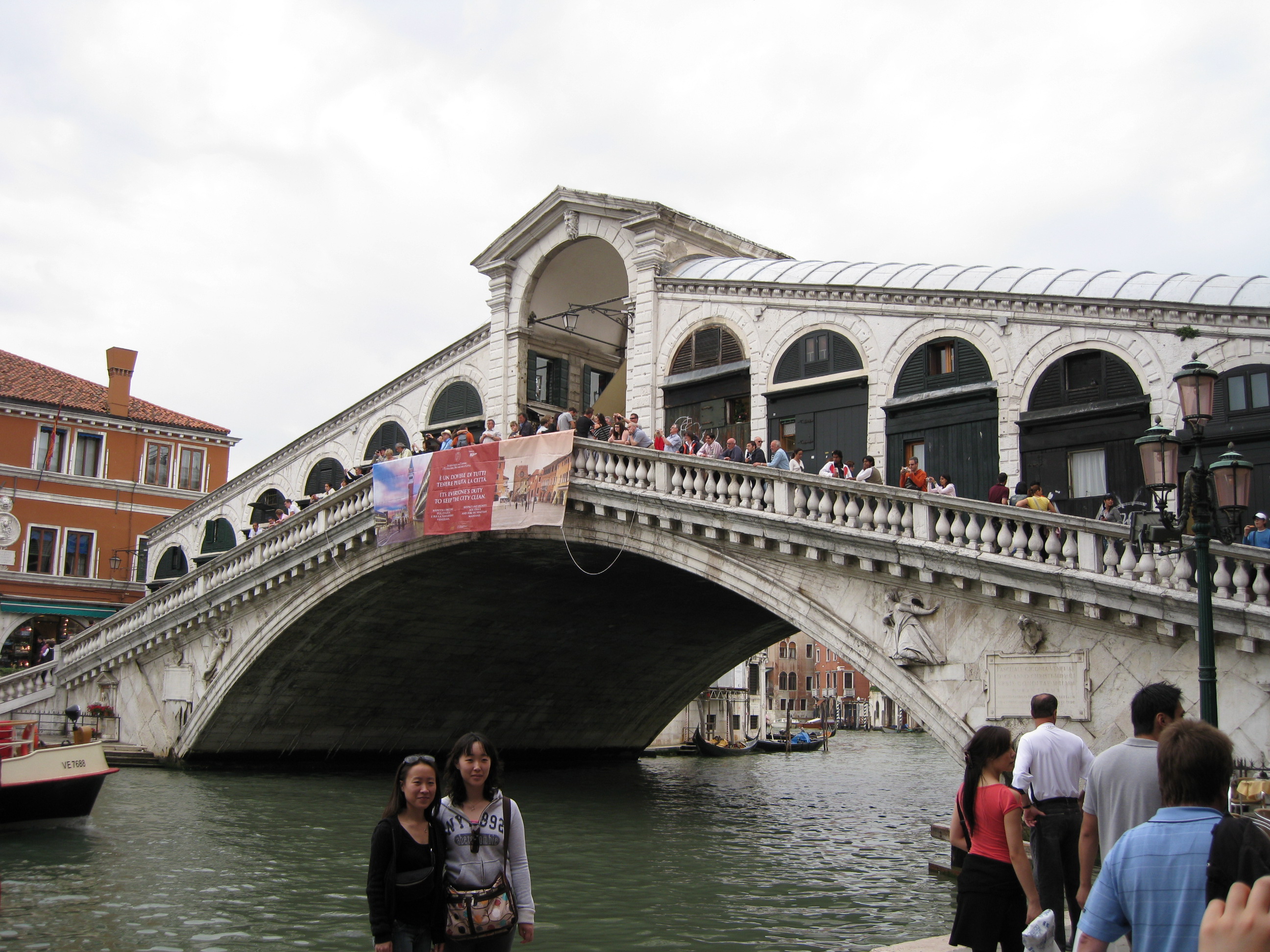CATHEDRAL QUEST
Our quest to experience the great cathedrals and churches of Europe
Day 13 Monday, May 19
VENICE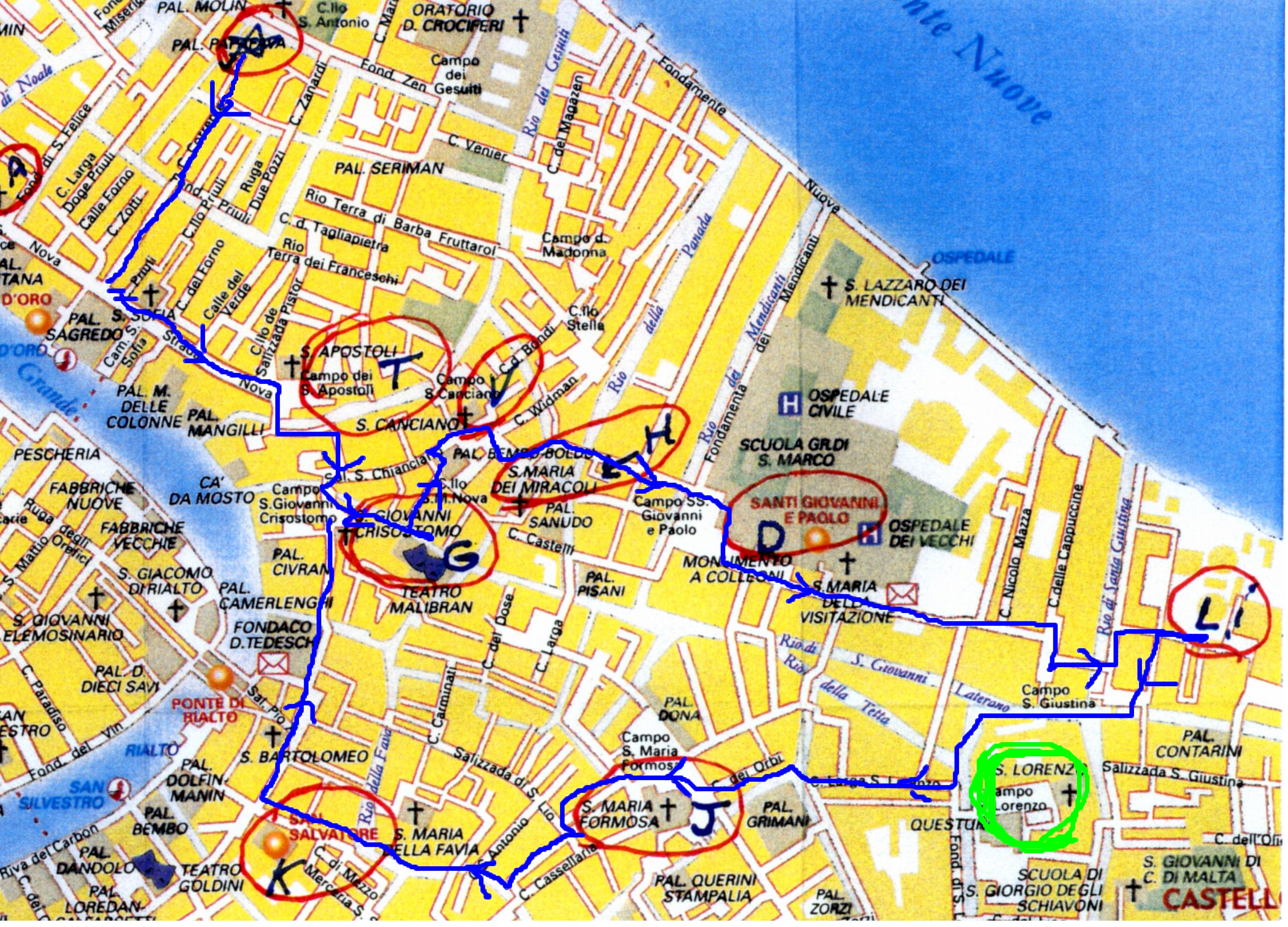
We got up at 7:30 and ate breakfast in the apartment. Before we started out my wife broke a second tooth. We had an agenda to see a number of churches in Castello area. Many of the churches in Venice were part of a guild, and we purchased a ticket that got us these churches.
In preparation for this trip, we made a list of all the churches we
wanted to see in Venice – 24 of them (and we saw them all!!).
Venice is divided in several areas so we planned our church quests around
a different area each day. The
map above will show our route each day. Our
route is traced in blue ink. The "*"
is
the location
of our apartment. I
have given letters of the alphabet to the location of these churches.
Please click on the letter in the text which will link you to a large map
of Venice with all the churches marked. As
with all of the churches we visited on this conquest, we studied them in detail
while planning the trip. We noted
various details we wish to see in each church and traveled with this list.
Due to the sw
download time on some it systems, I decided to include a few of photos of each church.
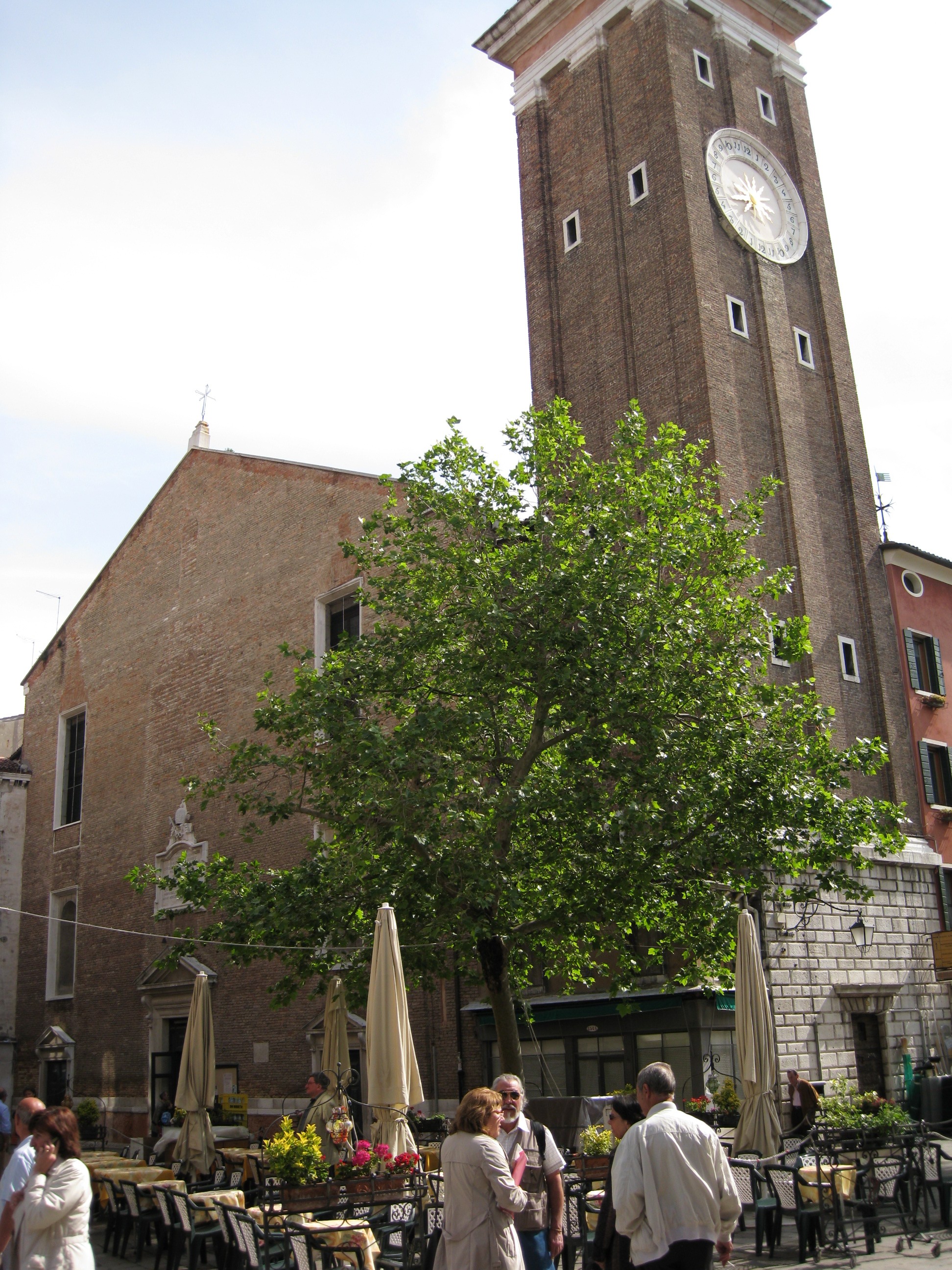
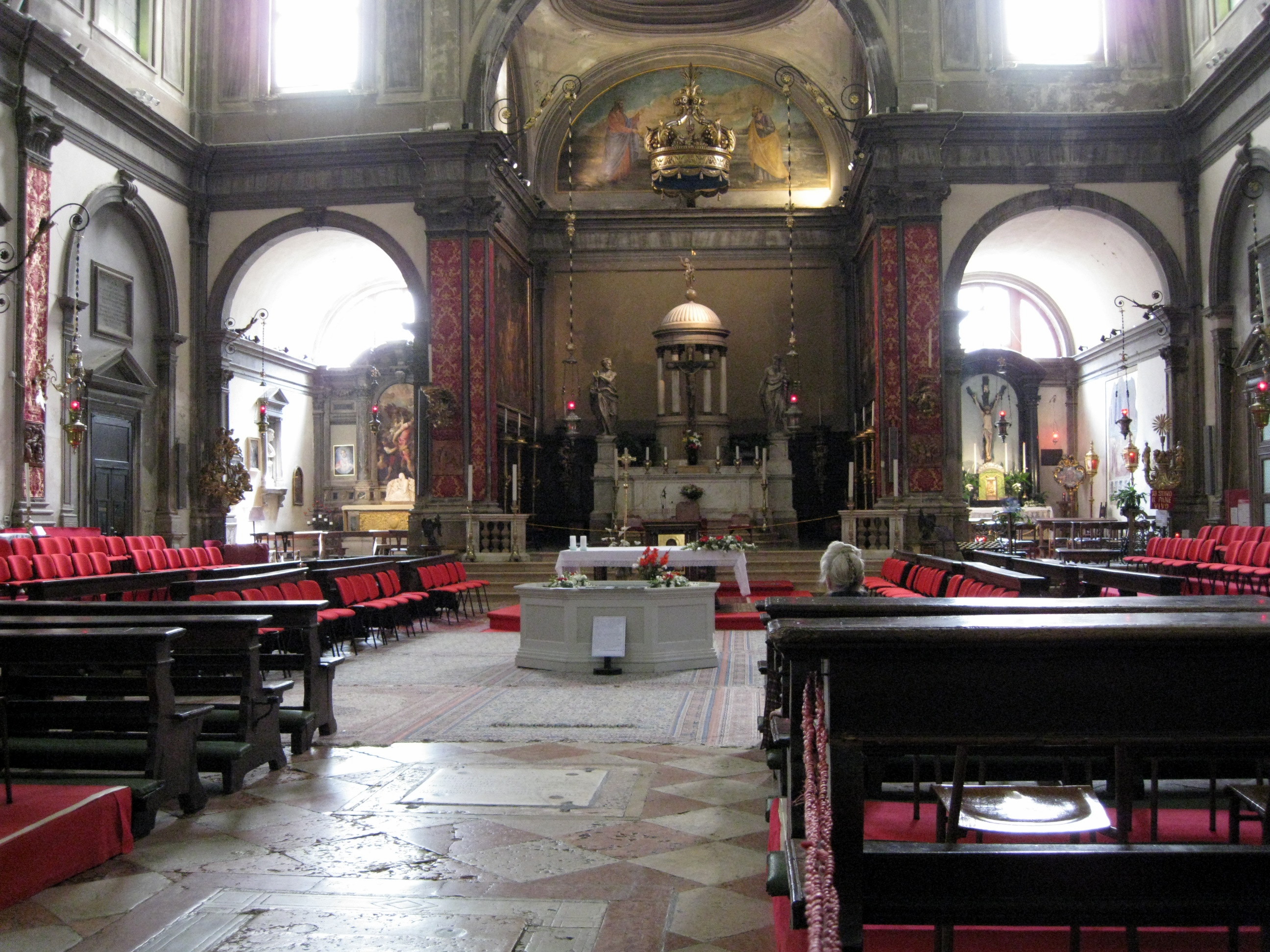


We walked down Strada Nova towards St. Marks.
The first church that we passed was the Church of the
Twelve Apostles
(“t” on the map).
It was founded in 1000, rebuilt in 1105 after a fire and again in 1549.
The bell tower was topped by a baroque onion.
The inside was one large room. There
was a central altar/sanctuary flanked by two side chapels.
There was an altar in the center of the nave with chairs
and benches on three sides. The
backs and seats were cover with red material.
Even though there was not a lot of “fru-fru” it was baroque.
 Not far from
Not far from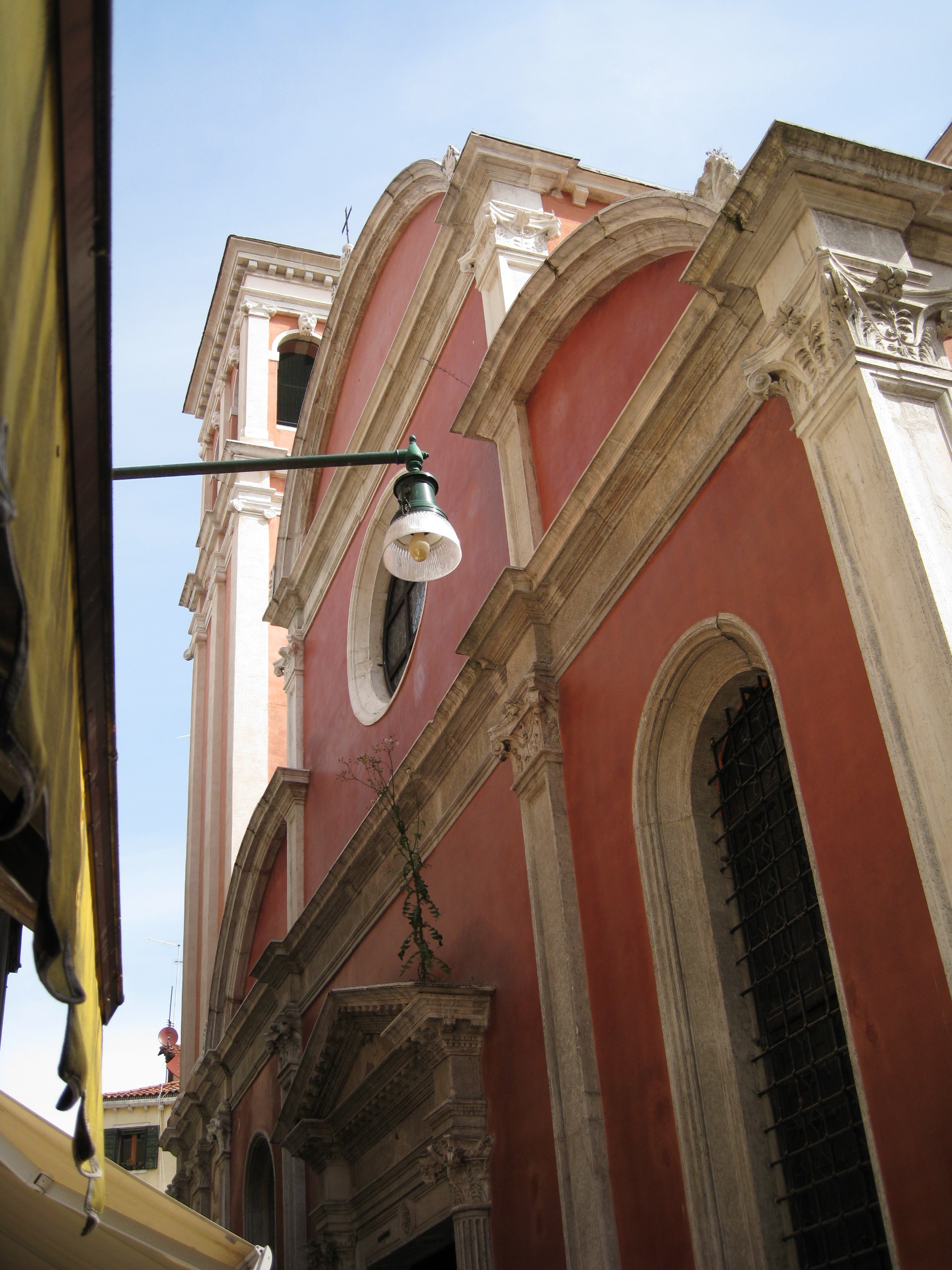 the
church we crossed another bridge and came to San Giovanni Crisostomo Church
(“g” on the map). It was pink
(terracotta) plaster/stucco with white trim and sat right on the street.
It was very difficult to take a picture of it.
It was built in 1479. The
interior was a Greek cross design. It
contained a Bellini’s St. Jerome with Saints Christopher and Augustine.
Mass was in process when we went in so we stayed for the service
the
church we crossed another bridge and came to San Giovanni Crisostomo Church
(“g” on the map). It was pink
(terracotta) plaster/stucco with white trim and sat right on the street.
It was very difficult to take a picture of it.
It was built in 1479. The
interior was a Greek cross design. It
contained a Bellini’s St. Jerome with Saints Christopher and Augustine.
Mass was in process when we went in so we stayed for the service
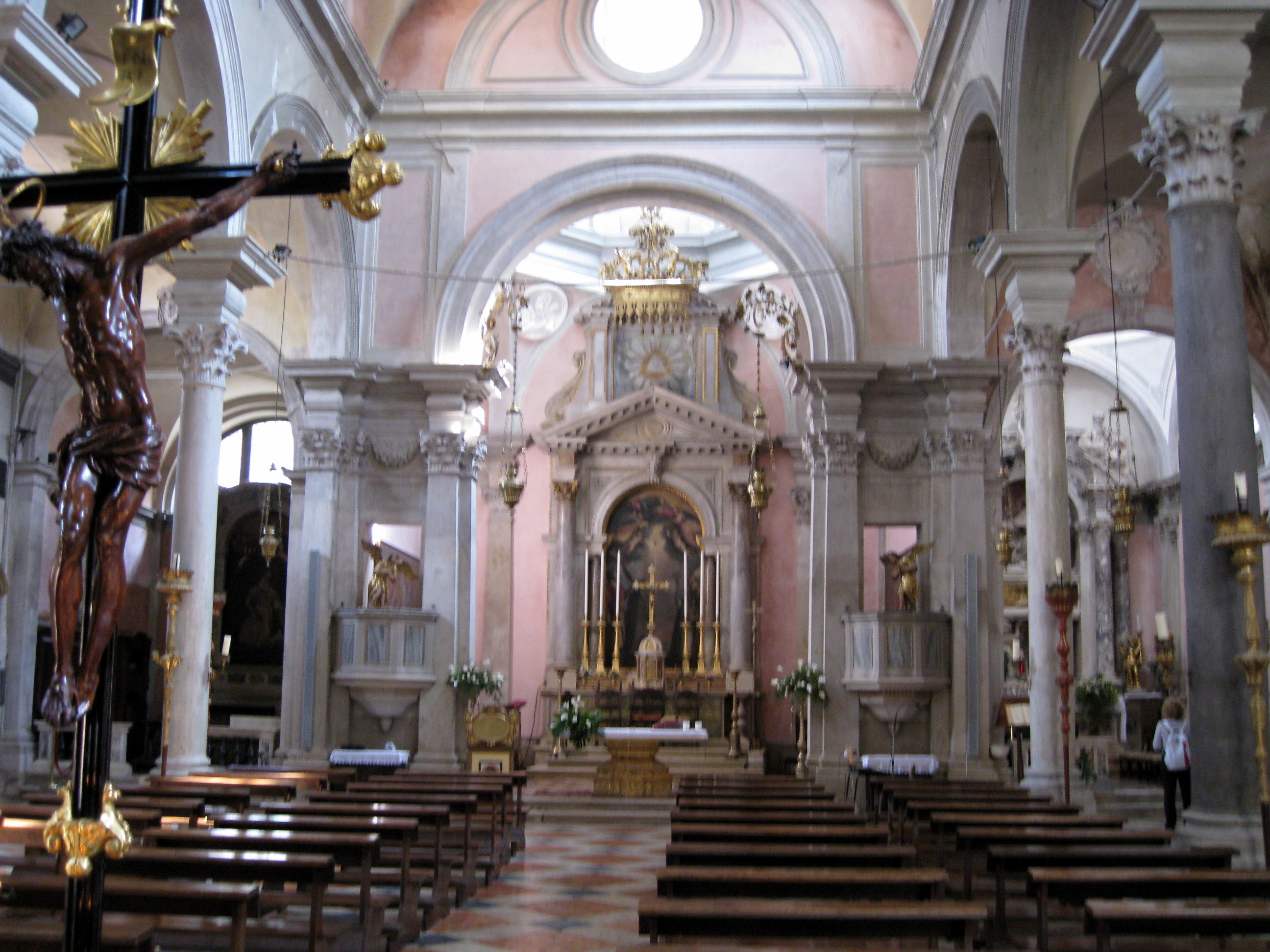
We went down a
wrong street and saw a house that Marco Polo had lived in.
We turned around and found the right street.
We passed La Chiesa di San Canciano (“v” on
the map) which was not on
our list. It was built in 1351 in a
Greek Cross design. It was rather
baroque inside. The walls were pink
and white trim. It was a rather open
and airy structure.
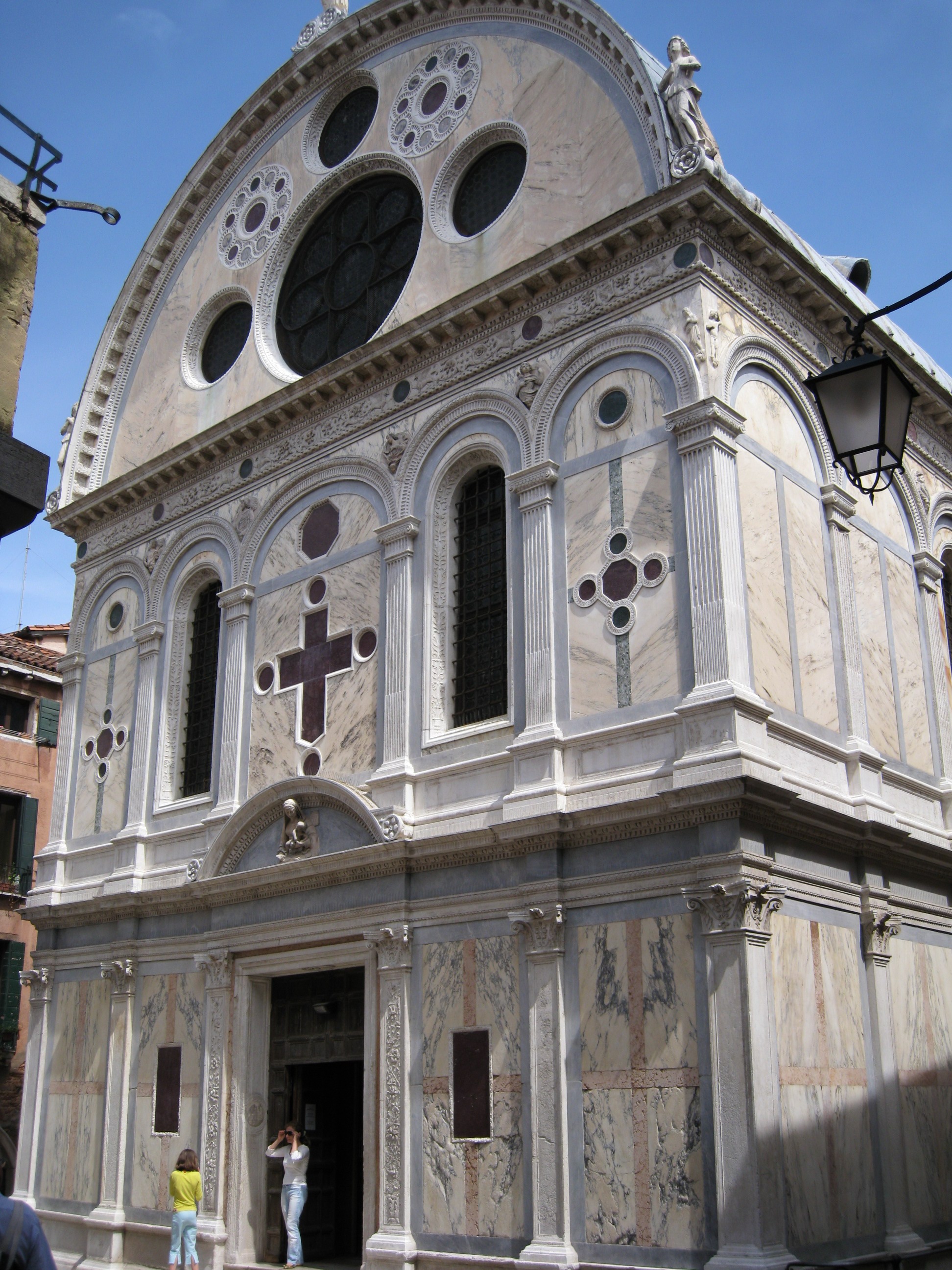
On our way to
Santa Maria die Miracoli we stopped for coffee in a little shop across the
bridge from the church.
Santa
Maria die Miracoli (“h” on the
map) was built in 1481-9 by Lombardo, and is
considered a M asterpiece of Renaissance architecture.
The façade had shades of marble with bas reliefs and a lot of sculpture.
The barrel-vaulted ceiling contained 50 portraits.
You weren’t allowed to take pictures in this church, but I stood off in
a corner where the person at the ticket booth couldn’t see me and took a
couple without flash. It was very
beautiful inside…very light. This church is popular a site for weddings.
asterpiece of Renaissance architecture.
The façade had shades of marble with bas reliefs and a lot of sculpture.
The barrel-vaulted ceiling contained 50 portraits.
You weren’t allowed to take pictures in this church, but I stood off in
a corner where the person at the ticket booth couldn’t see me and took a
couple without flash. It was very
beautiful inside…very light. This church is popular a site for weddings.
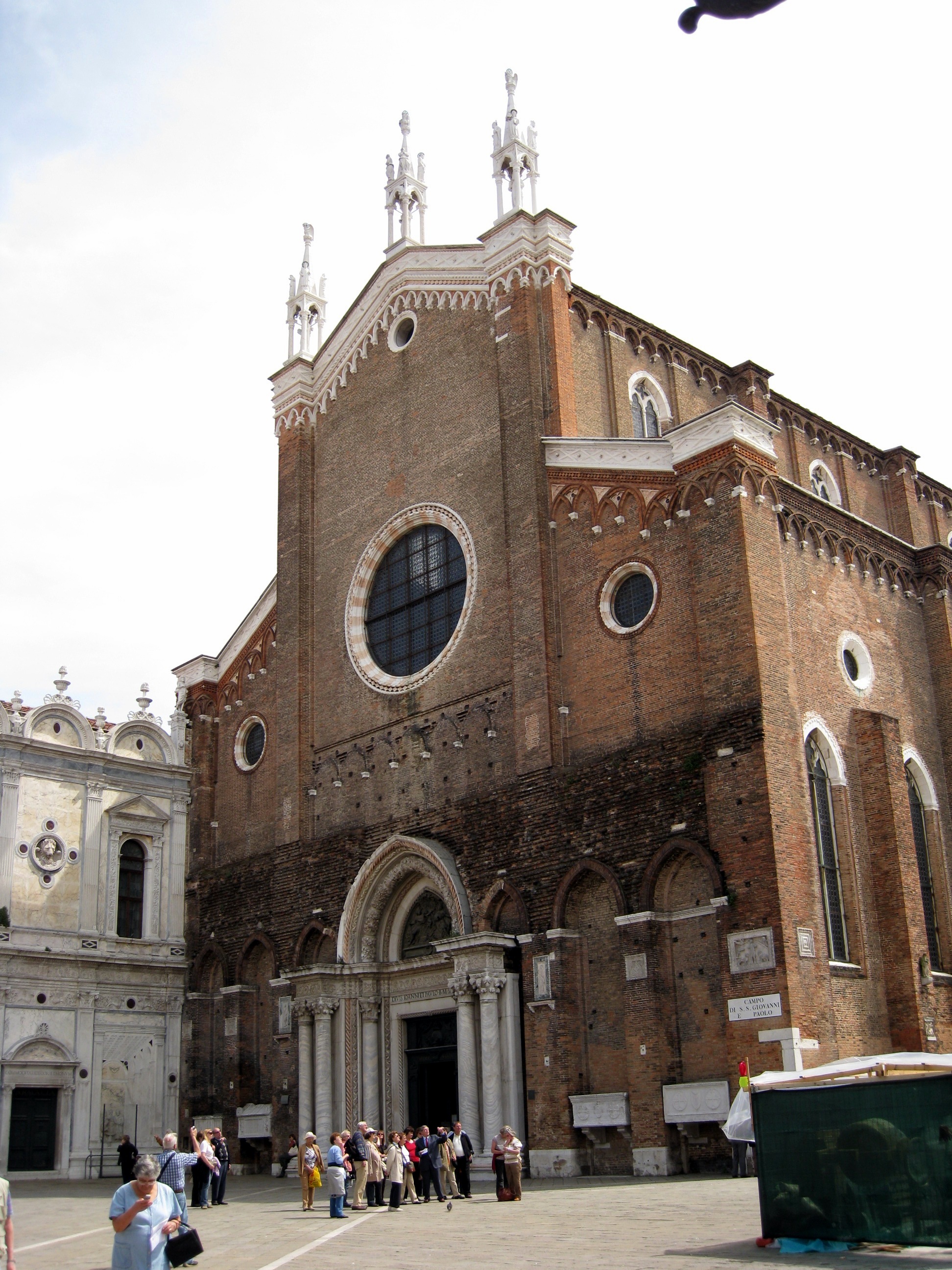
Following our
trusty map and the instructions that I had written we came up Campo SS. Giovanni
e Paolo and the Church of
Zanepolo” (Giovanni E Paolo) –Saints John and Paul “ (“d” on
the map). It was b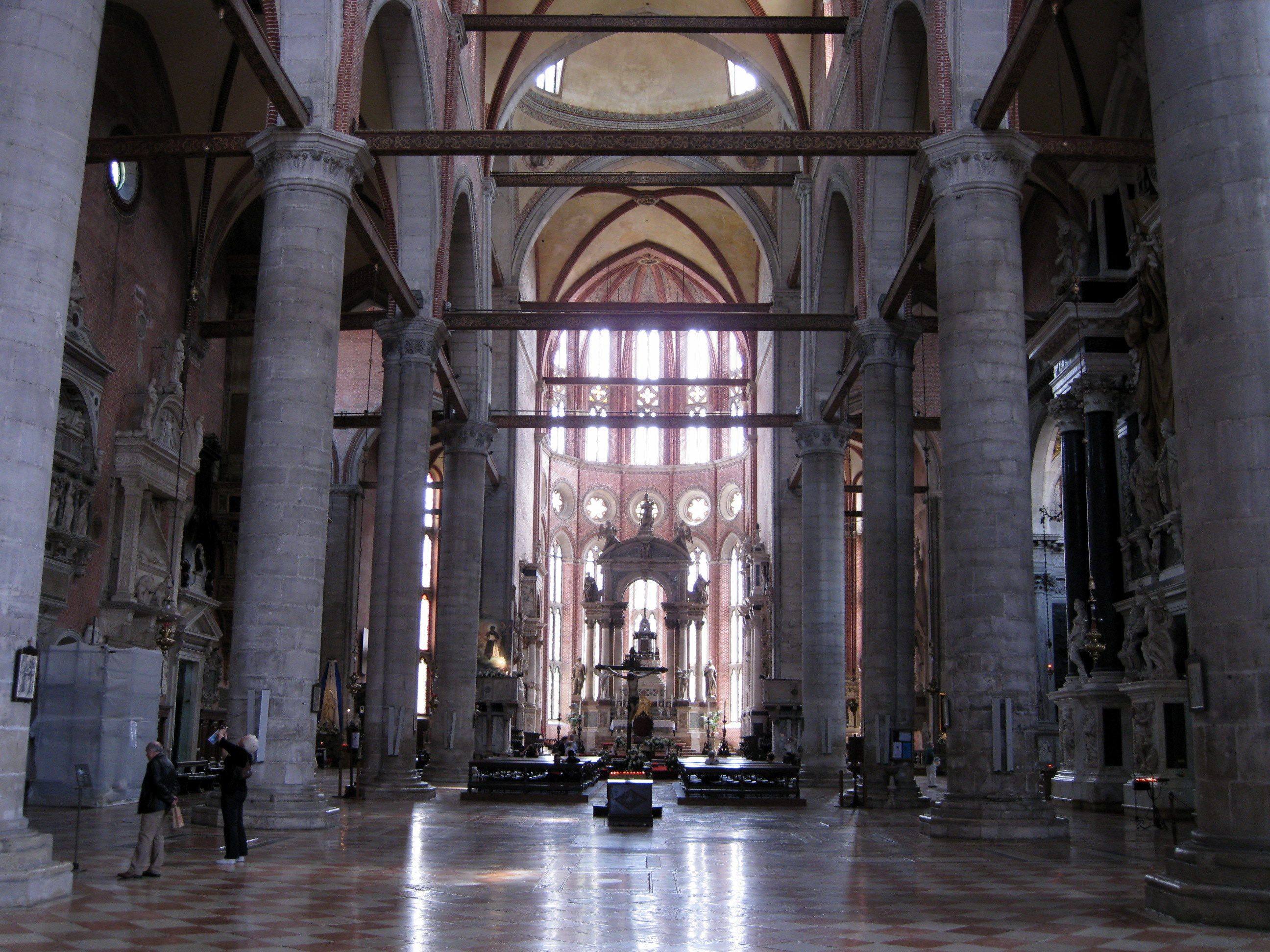 egun by the Dominicans in 1246 and finished in 1430.
It is known as the Pantheon of Venice.
It is very large and has many chapels and monuments to 25 Doges, several
of them on horseback. One chapel had
the foot of Catherine of Siena in a reliquary. The interior is a Latin Cross
with ten huge pillars. After
spending a lot of time in the church we ate at an outdoor café next to the
church. I had a chicken sandwich and
my wife had a boiled egg sliced on bread as she was concerned about her tooth.
egun by the Dominicans in 1246 and finished in 1430.
It is known as the Pantheon of Venice.
It is very large and has many chapels and monuments to 25 Doges, several
of them on horseback. One chapel had
the foot of Catherine of Siena in a reliquary. The interior is a Latin Cross
with ten huge pillars. After
spending a lot of time in the church we ate at an outdoor café next to the
church. I had a chicken sandwich and
my wife had a boiled egg sliced on bread as she was concerned about her tooth.
Adjoining the
church at a right angle was the hospital. It
had a baroque façade. We decided to
go to the hospital to see it they  had a dentist.
The entrance was a very large hall with several desks on one side.
We asked the person if there was a dentist….my wife pointing to her
tooth. They sent it through some
doors where we found a couple of medics who directed us to the dental clinic.
There was no one there but soon a man came out, and we explained our
problem. He told us to sit down and
before long a dentist came out and took my wife in his office.
He was a very nice young man. He
was able to put a temporary cap over the rough spot.
He didn’t charge us anything.
She felt much better with her tooth fixed.
She just hoped that she had no more tooth problems.
had a dentist.
The entrance was a very large hall with several desks on one side.
We asked the person if there was a dentist….my wife pointing to her
tooth. They sent it through some
doors where we found a couple of medics who directed us to the dental clinic.
There was no one there but soon a man came out, and we explained our
problem. He told us to sit down and
before long a dentist came out and took my wife in his office.
He was a very nice young man. He
was able to put a temporary cap over the rough spot.
He didn’t charge us anything.
She felt much better with her tooth fixed.
She just hoped that she had no more tooth problems.
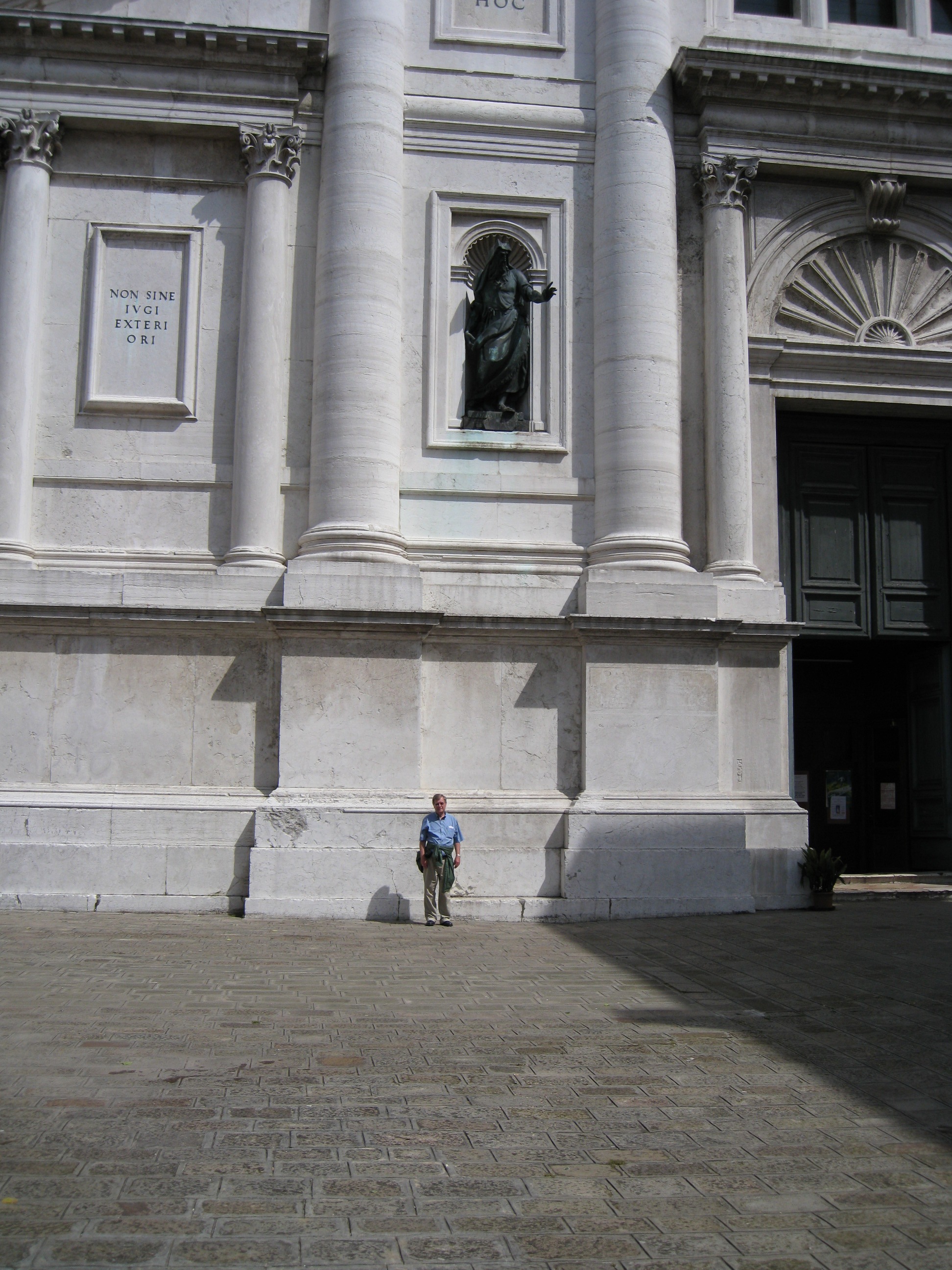
Feeling much
better about this tooth we continued our journey.
The next stop was San Francesco della Vigna
(from a vineya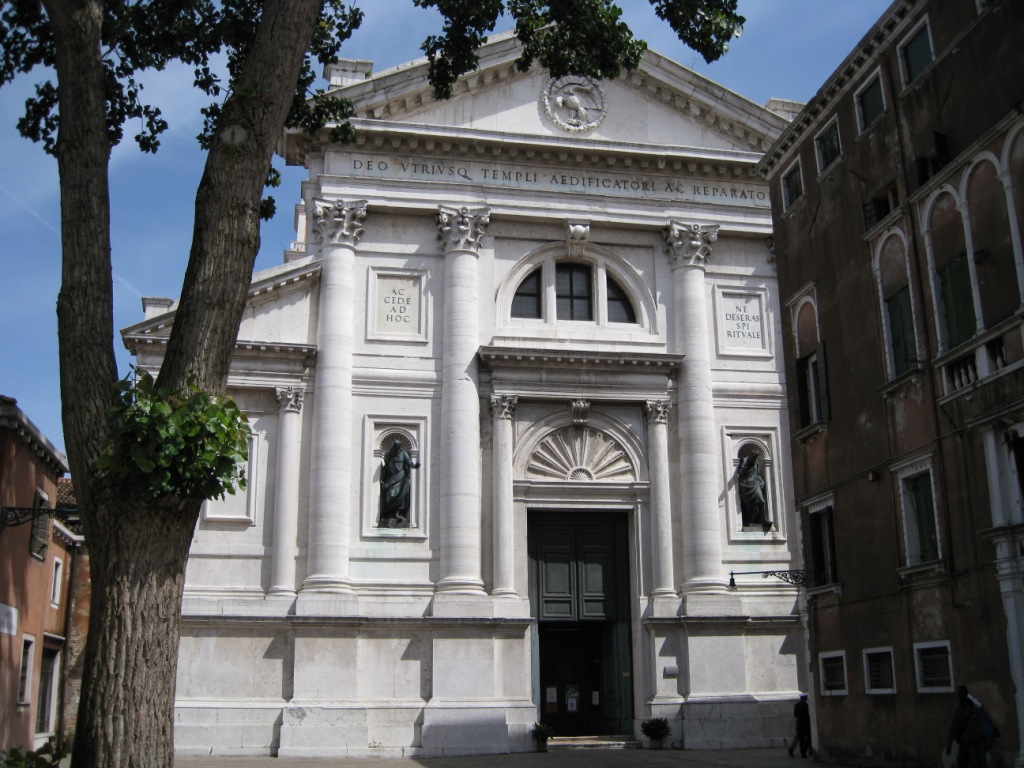 rd that was bequeathed to the Franciscans in 1253) (“I”
on the map). It was rebuilt by
Sansovino in 1534 and Palladio designed the façade in 1562.
The photo on the right gives a perspective as to the height of the lower portion
of the column base. I am standing against the base. The interior contained a number of side chapels and paintings by Vittoria
and Veronese. Pictures were
allowed so I took plenty.
rd that was bequeathed to the Franciscans in 1253) (“I”
on the map). It was rebuilt by
Sansovino in 1534 and Palladio designed the façade in 1562.
The photo on the right gives a perspective as to the height of the lower portion
of the column base. I am standing against the base. The interior contained a number of side chapels and paintings by Vittoria
and Veronese. Pictures were
allowed so I took plenty.
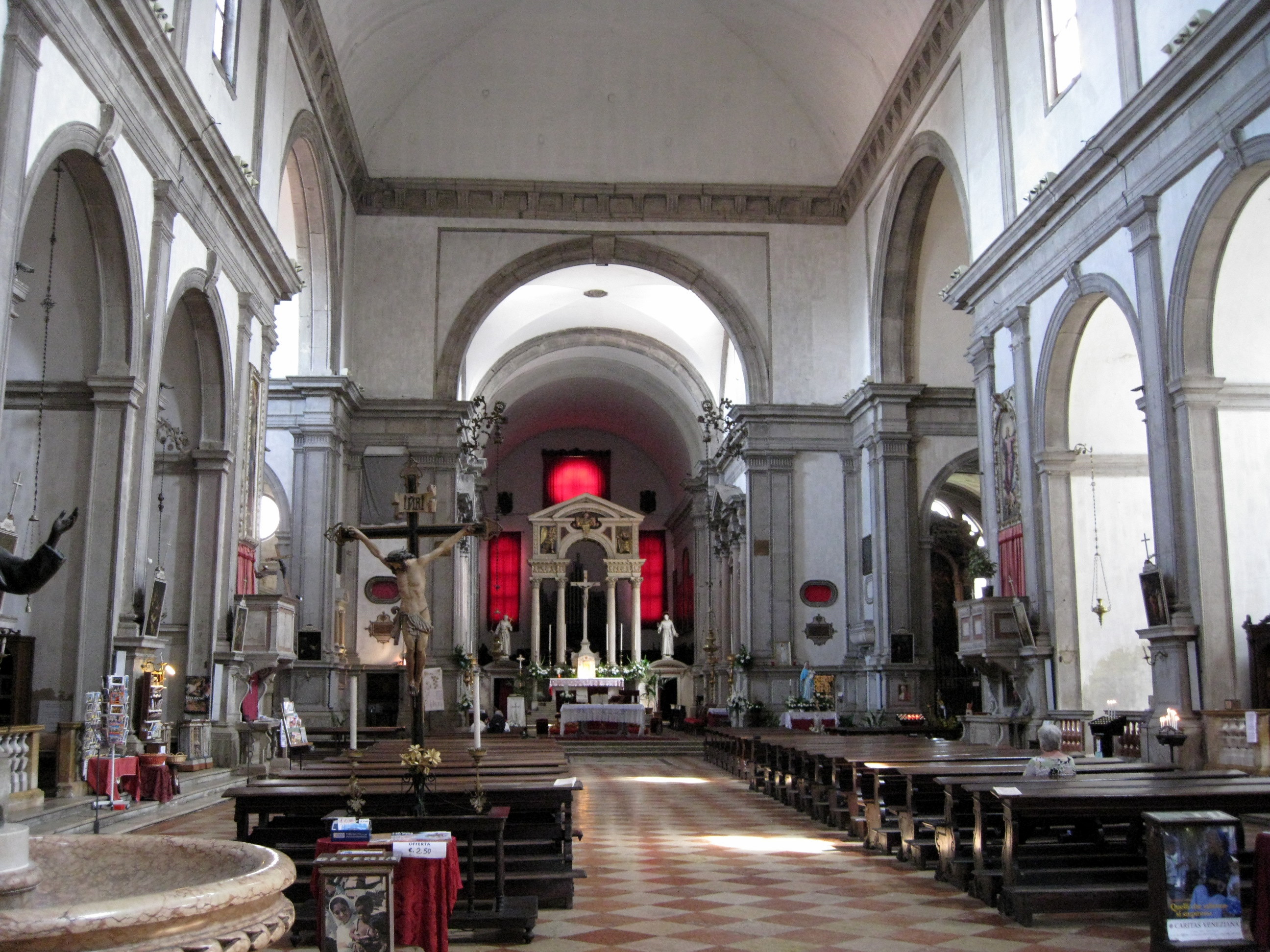 he most influential architects for the rebirth of the classical
tradition during the Italian Renaissance. Following the Roman architect
Vitruvious, Palladio made the classic style his own and promoted it in his
famous book,
The
Four Books of Architecture, and in his buildings, mostly located about 40
miles west of Venice in Vicenza. One of his most noted is the
Rotuna
(see my model). Palladio was the first to adopt a columned and pedimented
portico for a country house. Three church in Venice were designed by
Palladio - the facade of San Francesco della Vigna (above), San Georgio
Maggiore and Il Redentore.
he most influential architects for the rebirth of the classical
tradition during the Italian Renaissance. Following the Roman architect
Vitruvious, Palladio made the classic style his own and promoted it in his
famous book,
The
Four Books of Architecture, and in his buildings, mostly located about 40
miles west of Venice in Vicenza. One of his most noted is the
Rotuna
(see my model). Palladio was the first to adopt a columned and pedimented
portico for a country house. Three church in Venice were designed by
Palladio - the facade of San Francesco della Vigna (above), San Georgio
Maggiore and Il Redentore.
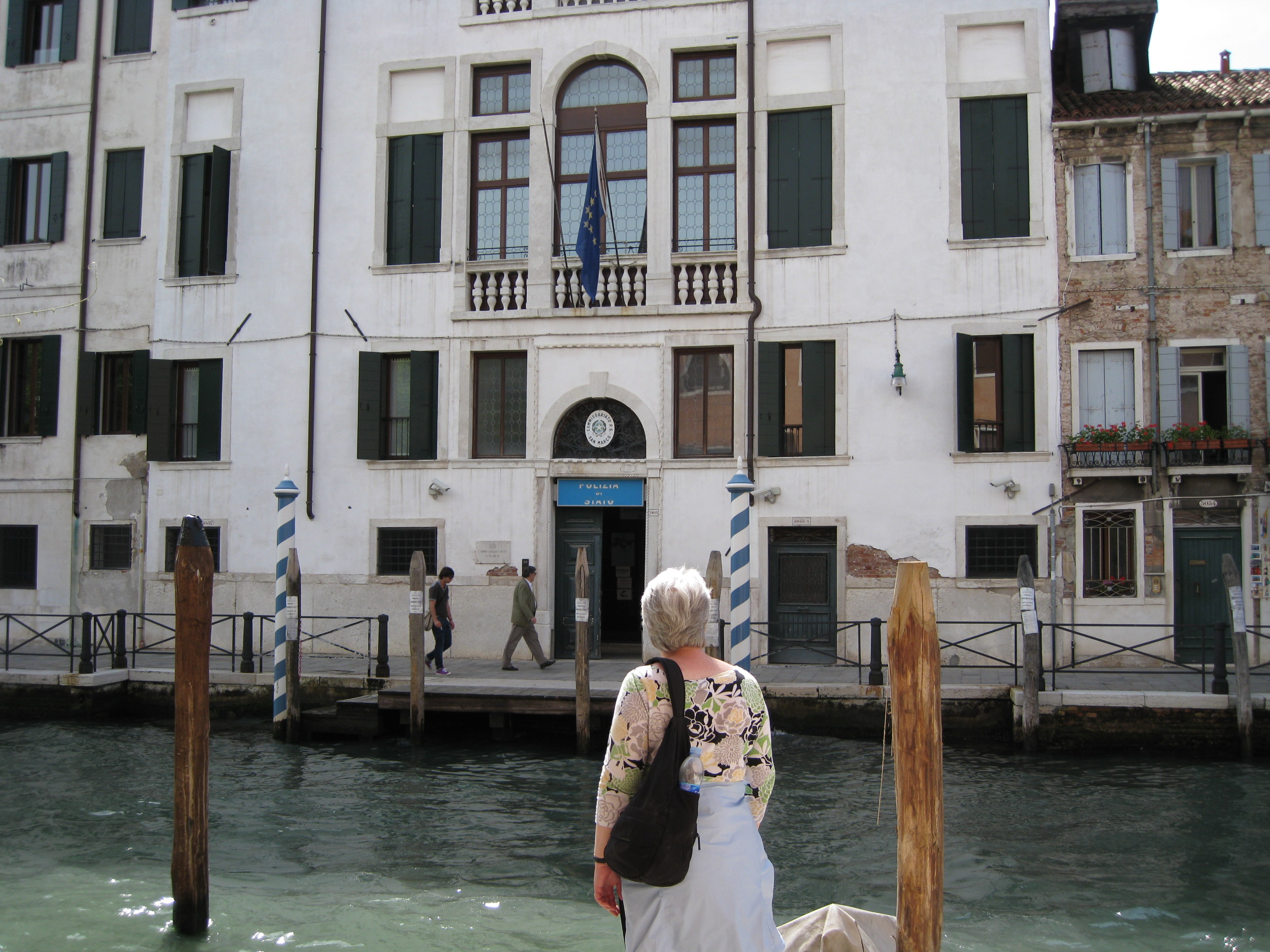
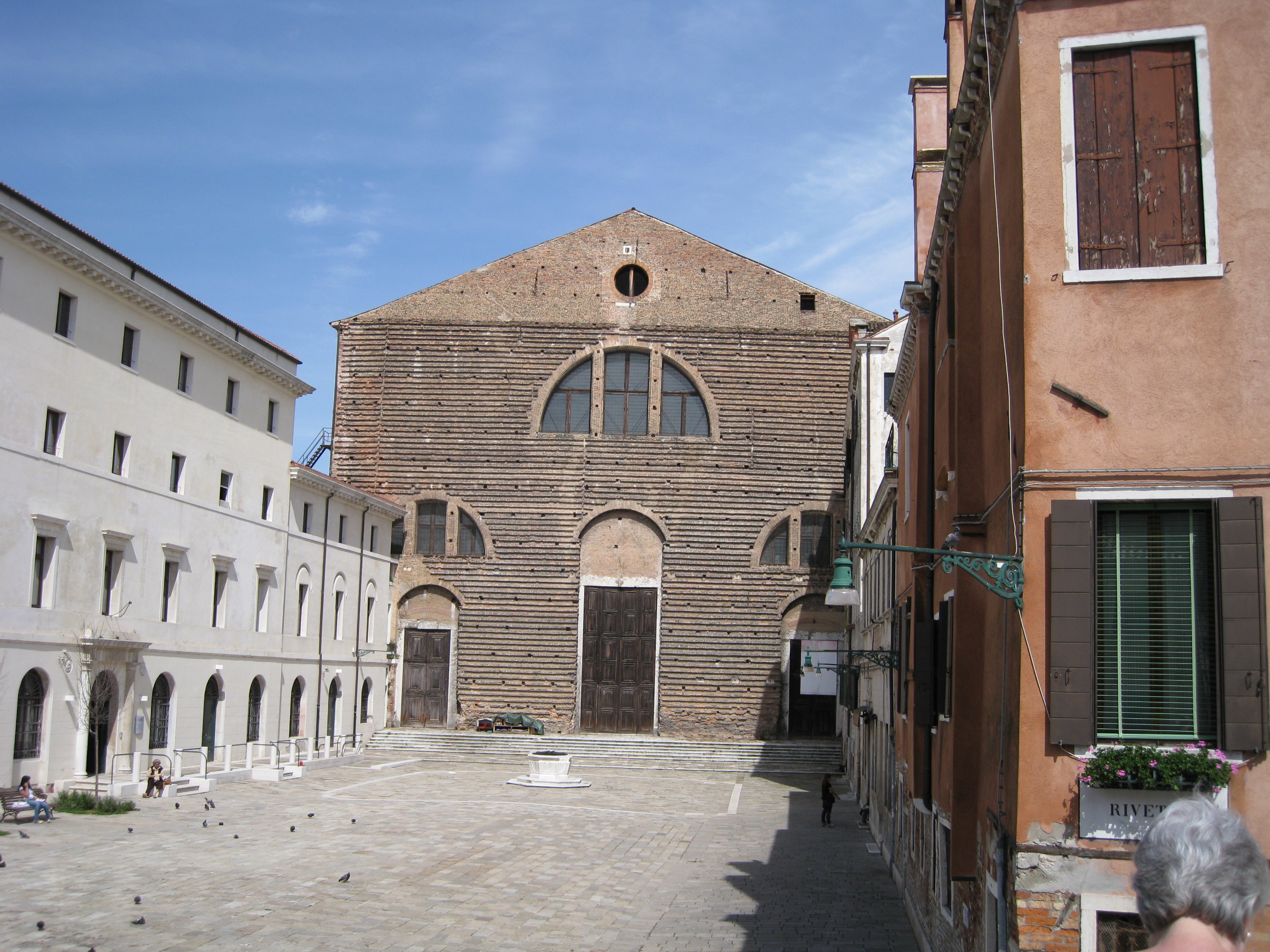
We were near the
Questura, ( note the green circle on the map above) which is the police department and office of the fictional character,
Inspector Brunetti in Donna Leon’s mysteries.
So we took pictures along with pictures of St. Lorenzo, the church that
Brunetti looks at from his office.
The next stop on
our search was Santa Maria Formosa
(“j” on the map), which dat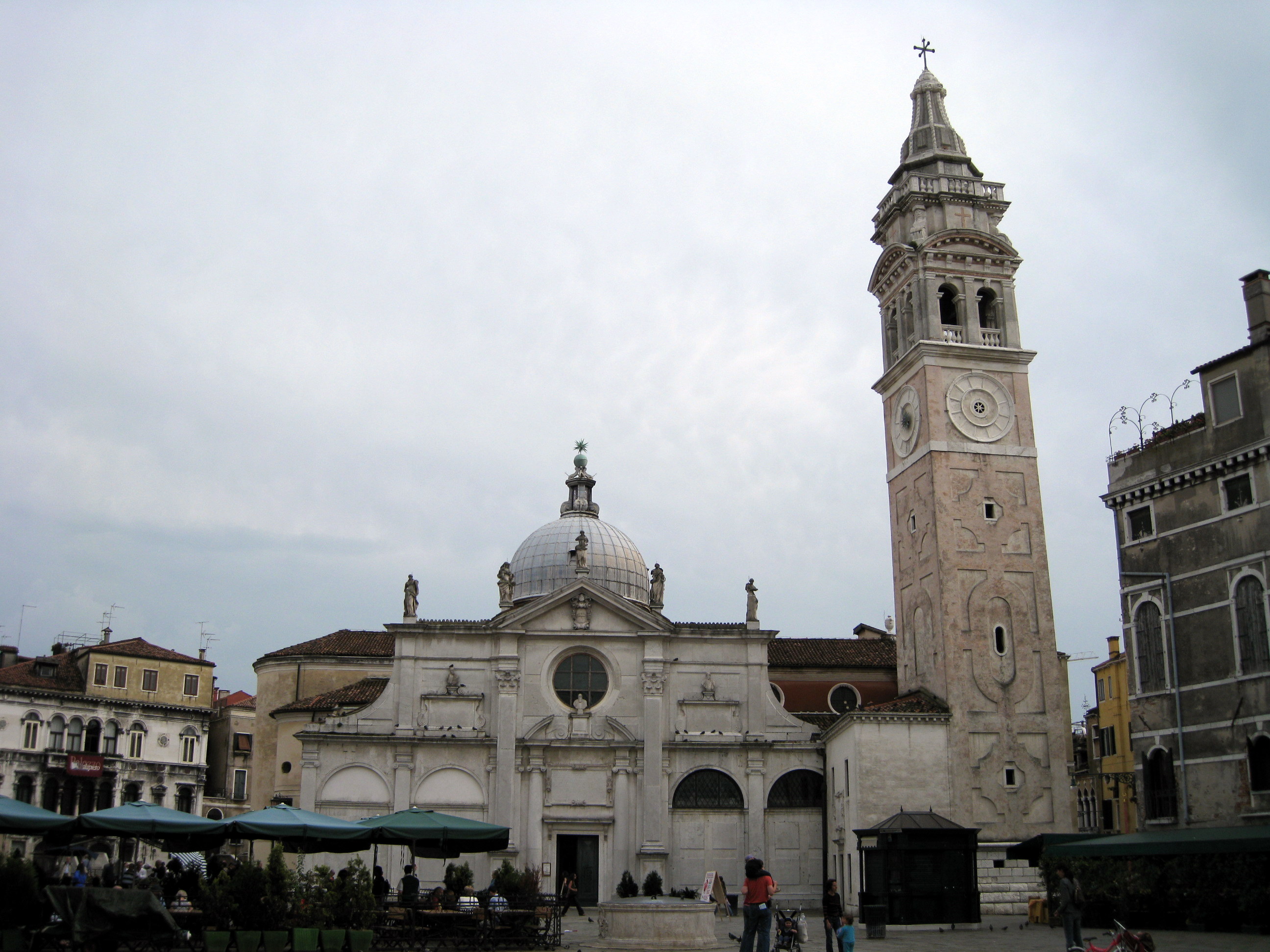 es to the 7th
century. It seems that the Virgin
appeared to people in a vision as
es to the 7th
century. It seems that the Virgin
appeared to people in a vision as 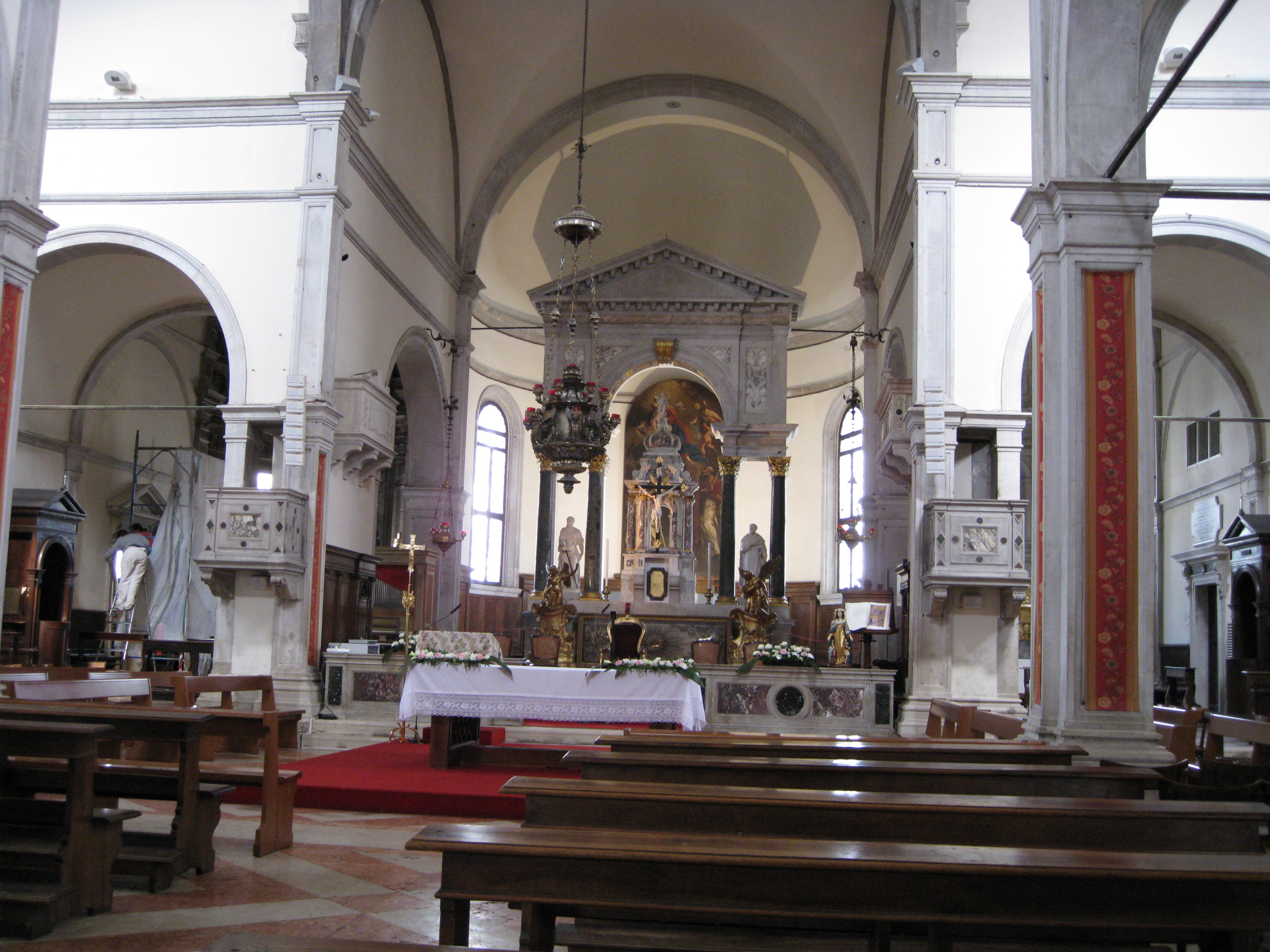 a plump (Formosa) matron and thus the name.
In 1492 it was rebuilt with a double façade, one facing the square and
the other side facing the canal. The interior was a Greek plan with three apse
chapels. There was a main
altar in the center apse and an altar at the cross in a red carpeted platform.
The columns were outlined in white trim with a red interior.
We could visit paintings behind the altar.
This church was badly damaged during WWII.
There was a nice Campo (square) in front of the church.
We stopped at an outdoor café and had a drink.
a plump (Formosa) matron and thus the name.
In 1492 it was rebuilt with a double façade, one facing the square and
the other side facing the canal. The interior was a Greek plan with three apse
chapels. There was a main
altar in the center apse and an altar at the cross in a red carpeted platform.
The columns were outlined in white trim with a red interior.
We could visit paintings behind the altar.
This church was badly damaged during WWII.
There was a nice Campo (square) in front of the church.
We stopped at an outdoor café and had a drink.
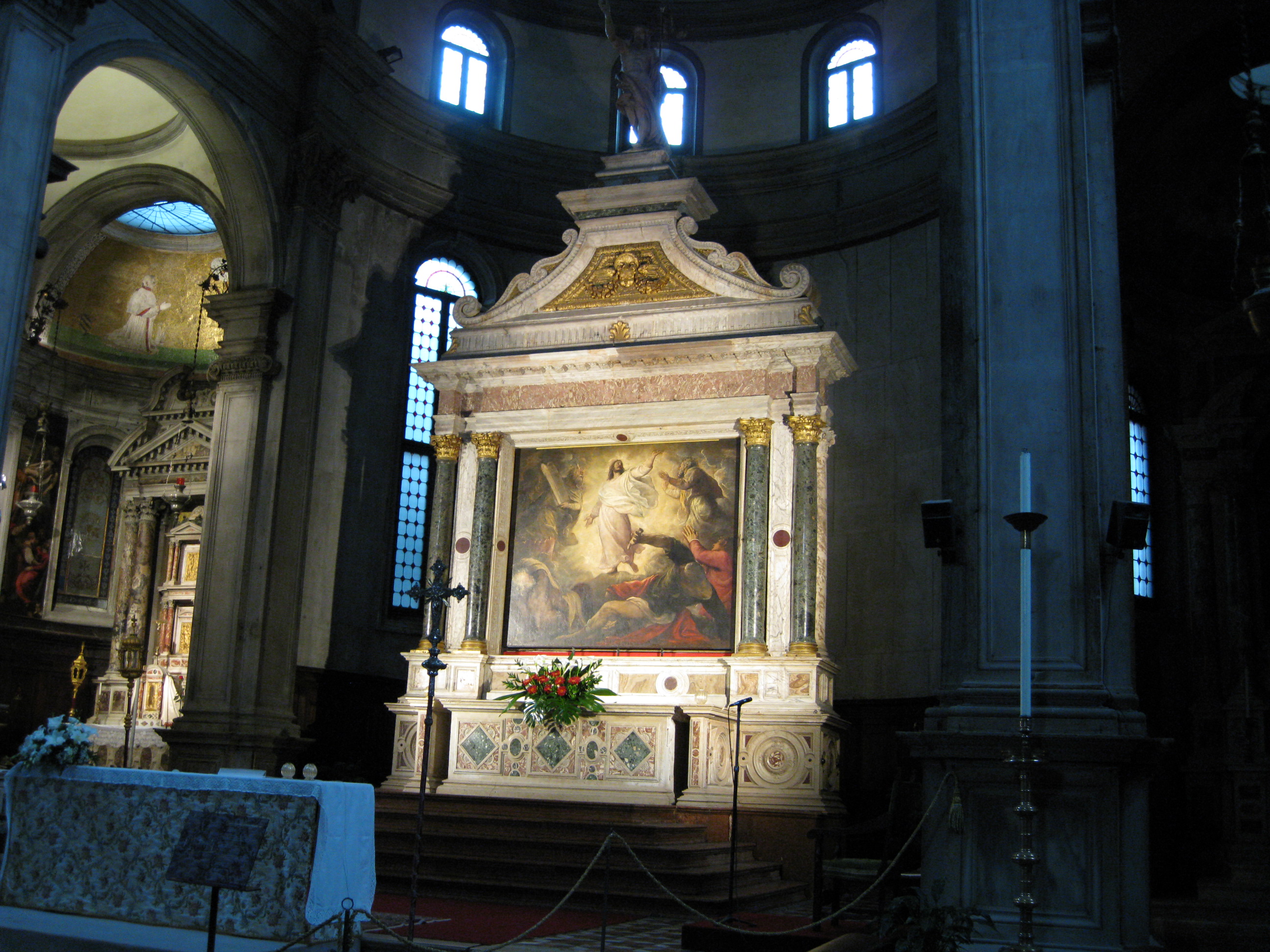
We were winding
back towards the canal. Another
stop at San Salvador (“k” on the
map), which was built in the 16th 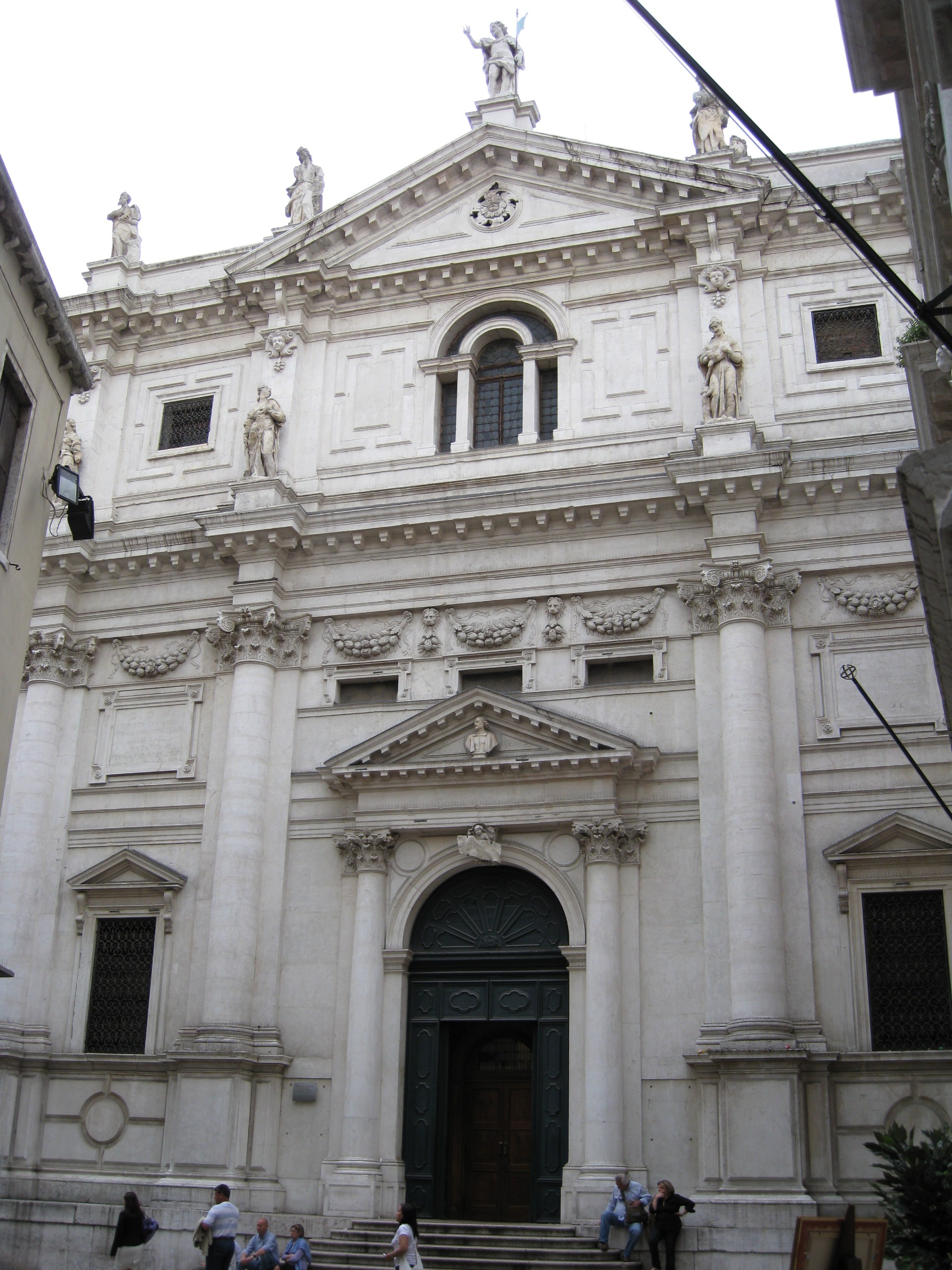 century in a traditional
Byzantine plan with three domes. The
façade was finished in 1663. The
high altar contained Titian’s Transfiguration
of Christ. I took several pictures
and was told to stop.
century in a traditional
Byzantine plan with three domes. The
façade was finished in 1663. The
high altar contained Titian’s Transfiguration
of Christ. I took several pictures
and was told to stop.

Not far from this
church we came to the Rialto Bridge. We
found the little café where we stopped for a drink and picture on our first
trip to Venice. They weren’t set
up to serve at the moment. We went
in a little jewelry shop and brought my sister a bracelet and my wife a bracelet
and ear rings.
